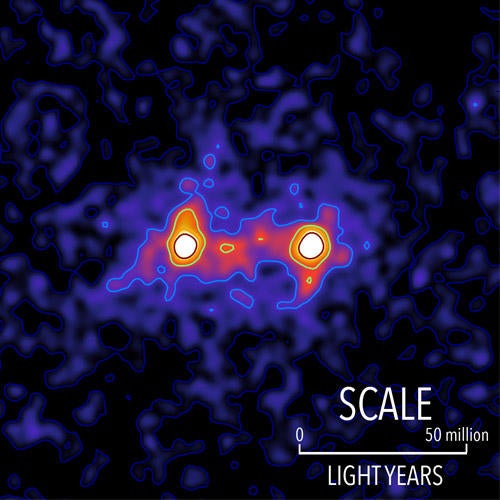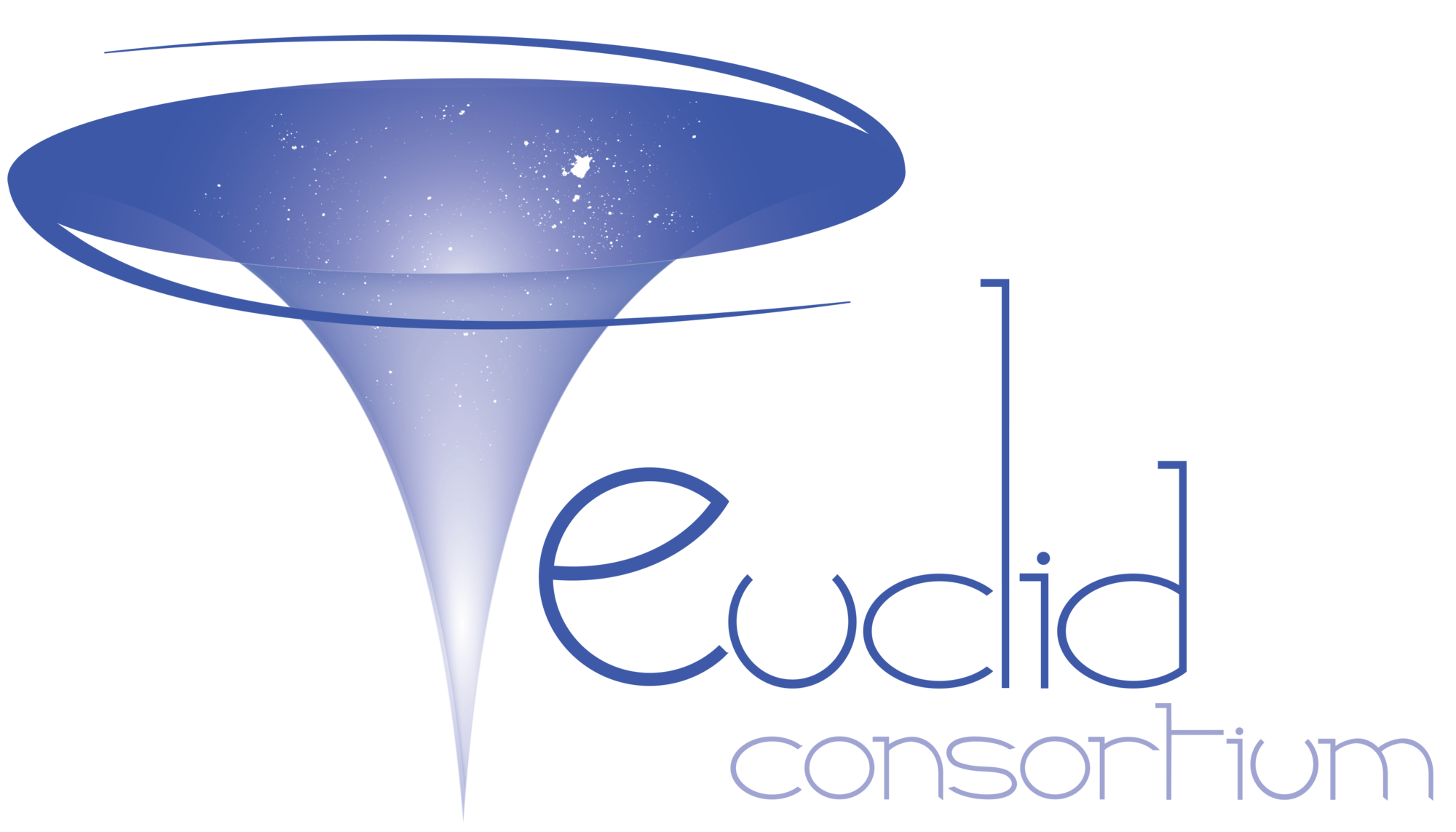Gravitational lensing is the distortion of distant background galaxies by all the intervening mass (dark or light, but there’s a lot more dark than light) that is between us and the distant galaxies. By carefully measuring the distortion, it is possible to measure the mass that is responsible.
Recent results:
 Weak lensing by filaments of the cosmic web The image to the right shows the signature of dark matter-dominated filaments (in red) that connect the dark matter halos where galaxies live (white spots). Read more about this result here, at the CBC or on Newsweek. Here is the published journal paper.
Weak lensing by filaments of the cosmic web The image to the right shows the signature of dark matter-dominated filaments (in red) that connect the dark matter halos where galaxies live (white spots). Read more about this result here, at the CBC or on Newsweek. Here is the published journal paper.
Galaxy-galaxy lensing This is the lensing of distant background galaxies by nearer foreground galaxies. It allows the measurement of the masses of the dark matter halos that surround the foreground galaxies and, in general, lets us understand how galaxies and their dark matter haloes co-evolve. We studied gaalxy-galaxy lensing in this paper.
The shapes of dark matter halos Are dark matter haloes spherical? The simple answer is no: they appear elliptical in projection and the dark matter haloes are aligned with galaxy light, as we showed here.
I am participating in the following lensing projects or surveys:
The Ultraviolet Near Infrared Optical Northern Survey
 I lead the weak lensing gravitational lensing team of UNIONS, a deep panchromatic imaging survey of over 6000 square degrees of the Northern sky. The first weak lensing papers from UNIONS are out!
I lead the weak lensing gravitational lensing team of UNIONS, a deep panchromatic imaging survey of over 6000 square degrees of the Northern sky. The first weak lensing papers from UNIONS are out!
Euclid Satellite Mission
The Euclid mission is a European-led space telescope that launched in 2023 and is currently observing a third of the whole sky with sharp images that only space can provide. It will be awesome for gravitatonal lensing. I am a member of the Weak Lensing Science Working Group, and co-lead the Galaxy-galaxy Lensing work package.

